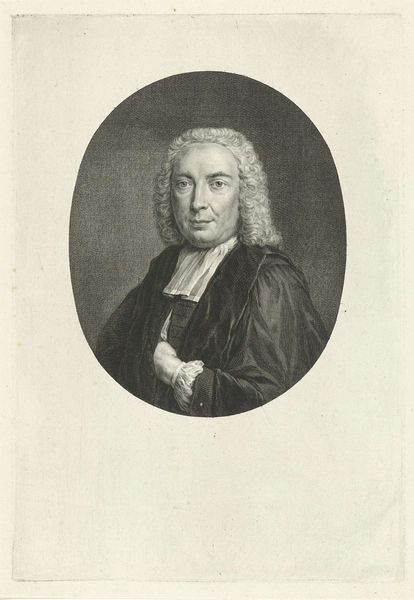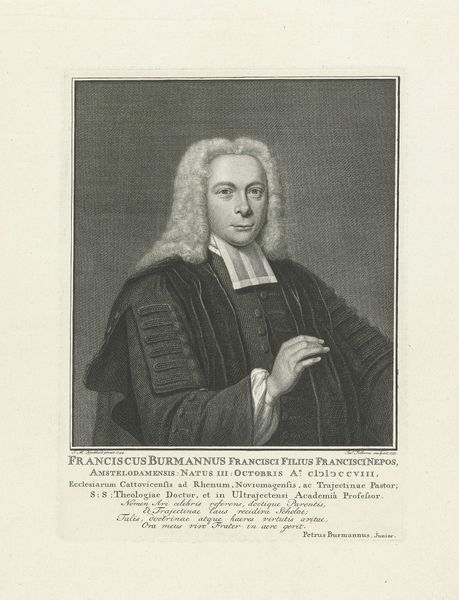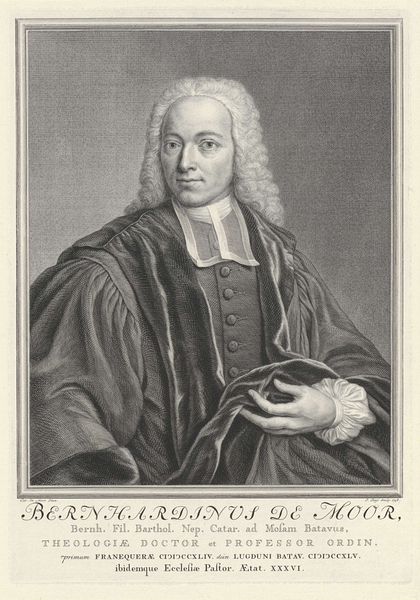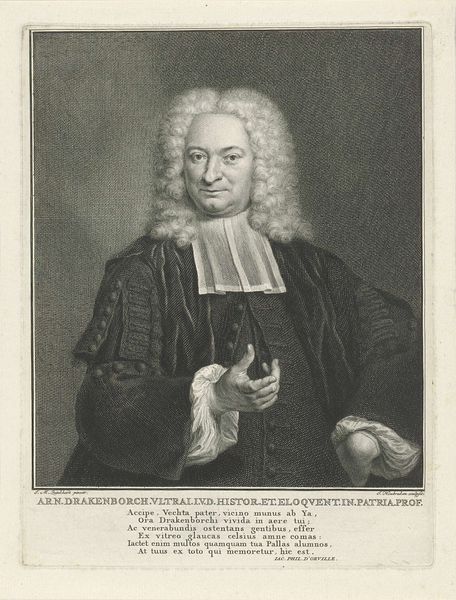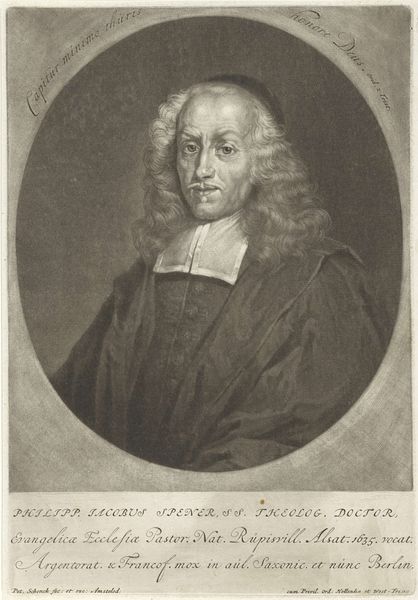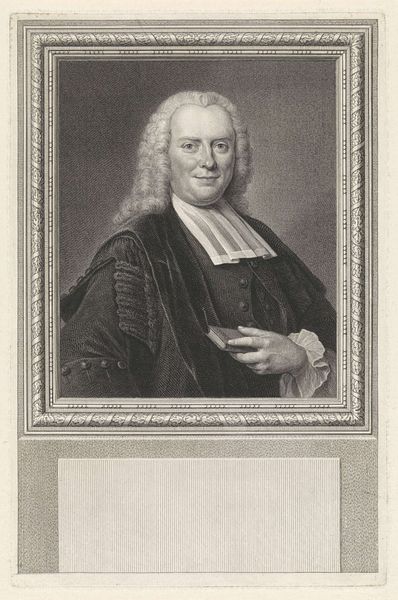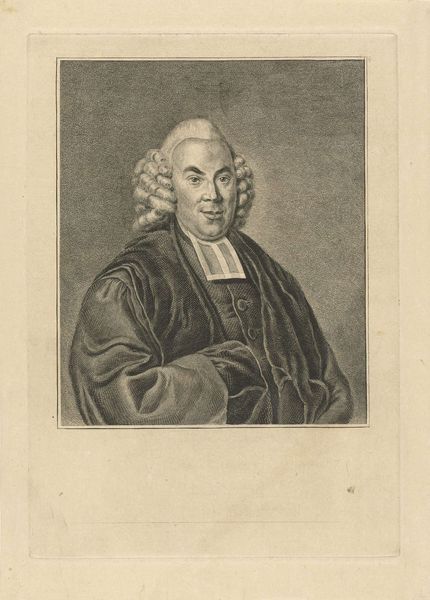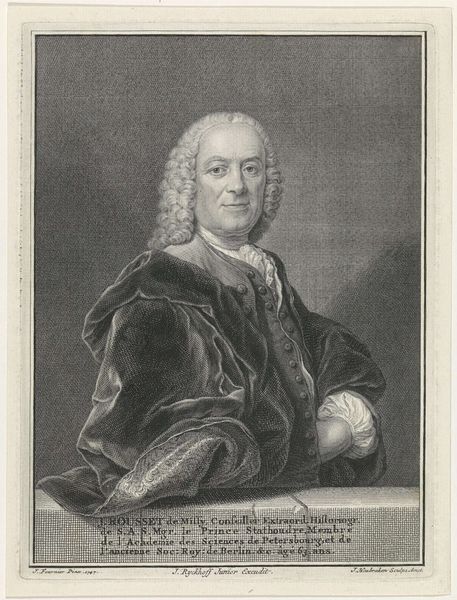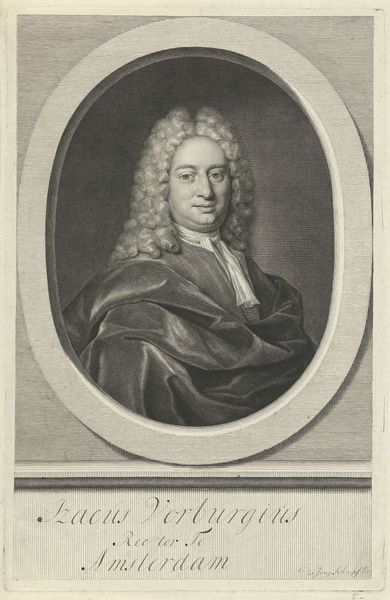
engraving
#
baroque
#
15_18th-century
#
history-painting
#
academic-art
#
engraving
Dimensions: height 310 mm, width 218 mm
Copyright: Rijks Museum: Open Domain
Curator: Welcome. We’re looking at Pieter Tanjé's "Portret van Johannes Esgers" from 1741, housed here at the Rijksmuseum. The piece is an engraving. Editor: It projects such gravitas, doesn't it? The sheer weight of those lines etched into the paper... an undeniable presence emerges. Curator: Indeed. Notice the precise rendering of Esgers’ face, framed by that voluminous wig. Tanjé masterfully utilizes the engraving technique, creating a rich interplay of light and shadow. Semiotically, the composition focuses attention toward the direct gaze, and the textures establish a sense of depth and hierarchy in terms of surface qualities. Editor: That wig is more than mere fashion; it signifies power and status. Think about the elaborate rituals surrounding its creation and the implied learning or wealth that comes with such status. Also, his hand gently placed upon his stomach— a subtle sign of contentment. It all reinforces this man’s position within the social and intellectual spheres of his time. Curator: Quite right. The meticulous details—the folds in his gown, the texture of the wig—underscore a commitment to representing not just physical appearance but also the sitter’s social standing. There's an objective almost clinical nature to its execution. Editor: The somber, academic gown also feels iconic, doesn't it? I envision generations of scholars clad in similar attire. This portrait not only commemorates an individual but embodies an entire legacy of learnedness and tradition— almost akin to ancestral totem worship! Curator: The restrained composition reinforces this further. It prioritizes clarity and emphasizes the sitter’s features without relying on extraneous elements for emotive effect. Editor: Thinking of this in iconographic terms, these markers, such as attire and setting, trigger associated qualities such as authority, respect, intelligence—characteristics highly valued within that cultural moment. It reveals societal codes, almost as if acting as a visual emblem of the Enlightenment itself! Curator: Agreed, a remarkable study in representation. Tanjé’s precision and the inherent materiality speak volumes about artistic and societal values of the era. Editor: A quiet testament to power rendered through the symbolic language of appearance— food for thought!
Comments
No comments
Be the first to comment and join the conversation on the ultimate creative platform.
